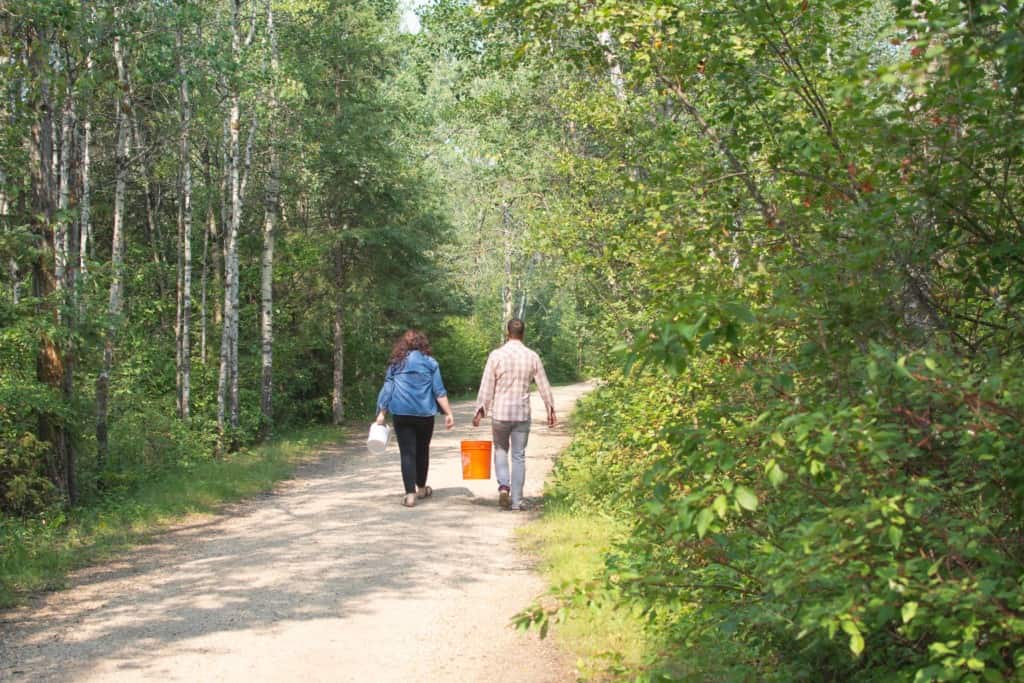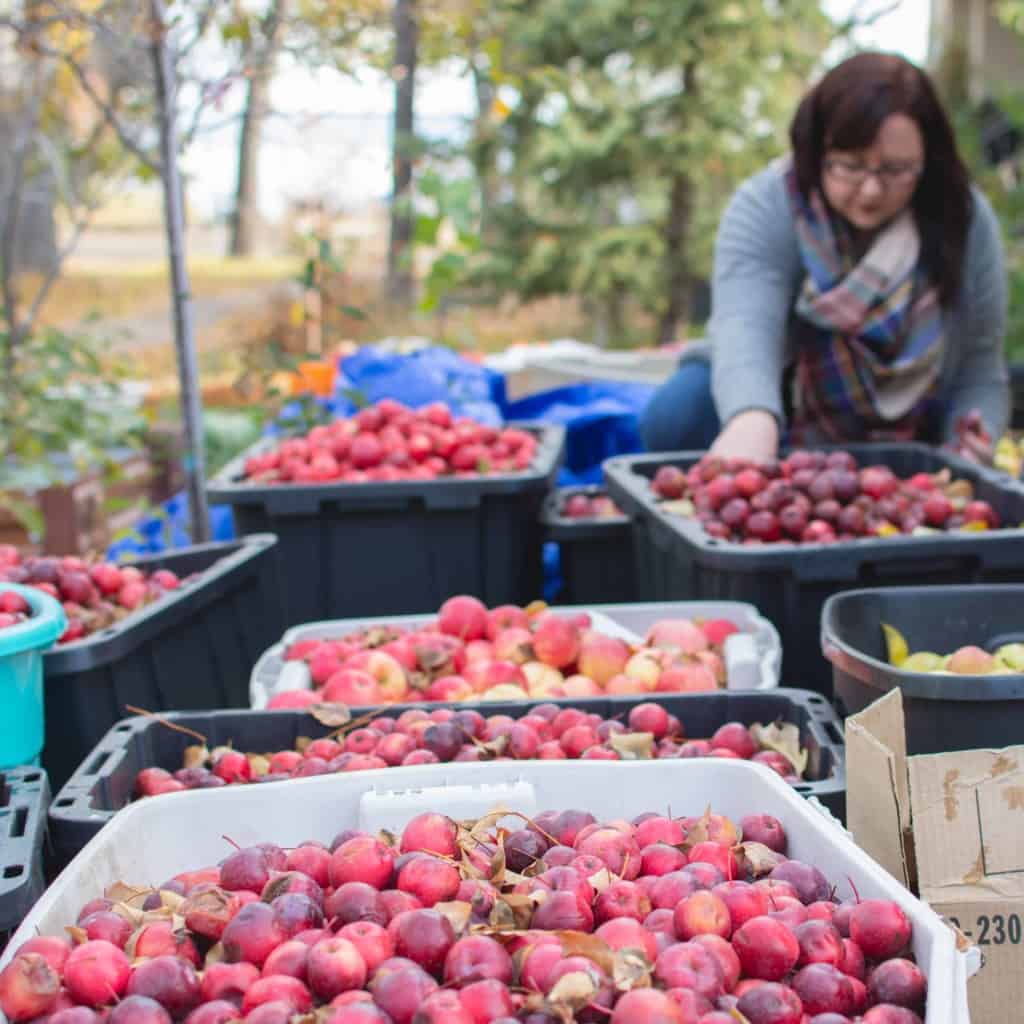When trees give you apples, make cider
Use excessive apples from your tree to make delicious cider
A few years ago, I lived in a little house in Parkdale. I had a crabapple tree in my yard, and every fall, I would make one or two pies, some apple crisp, and applesauce. That would use up a few dozen apples. The rest of the apples would start falling, attracting wasps and my dogs—an unfortunate combination.
It’s wonderful to grow your own food. But what do you DO with that many apples?
Nadine Riopel lives in Spruce Avenue and learned to make cider as a volunteer for Operation Fruit Rescue (OFRE). Now she hosts an annual cider pressing weekend every summer for friends and neighbours, which she values for a number of reasons.

“Firstly, I get cider, and that’s important because you can’t buy it anywhere. I don’t know where to get something that tastes like this except to make it,” she says. “But also I hate waste, and we get a lot of backyard fruit going to waste, and this is the best way to use up backyard apples by volume. You can only make so many pies and sauce. But you can do a whole tree into cider in an afternoon.”
It’s a production that benefits from many hands.
“When we’re mid-cider-day, we will have boxes and boxes of them covering the entire deck area. I’ve never counted; they just show up and we push them through,” she says. “Cider days is one of the main hosting things we do in the year, and people come over and hang out, and neighbours meet. It’s a bit of a community-building social thing.”
It’s a simple process: pick apples, rinse them, crush them, and then press them. You can rent a press from a home-brew or wine-making shop, but an apple crusher might be harder to find. Riopel had a friend build her one, and OFRE has its own pedal-powered machine it uses in its community events.
Riopel pasteurized the cider and sealed it in jars. Twenty-four litres of cider lasted Riopel’s family almost a year. The sweetness or tartness of the cider depends on the blend of apples. She opens the last jar from last year, and it’s sweet and refreshing.

There is also the option to add yeast and ferment it into hard cider, which is what Nathan Smith does. He’s the head cider maker for Prairie North Cider, a new company dedicated to making cider from local apples.
“I think what we do that’s different is our focus on these prairie flavours. A lot of Okanagan ciders use regional flavours like peaches, but we try to focus on the flavours that are unique to here and represent where we’re from. We don’t see a lot of those in commercial ciders.”
Those “prairie flavours” include rhubarb, raspberries, saskatoons, and sour cherries, and more unusual seabuckthorn, haskap berries and spruce tips. But the apples will come from the community. People can contact Prairie North through their website, prairienorthcider.com, and arrange for them to take extra apples and turn them into cider.
“One thing I‘m interested in, is some of the very old apple trees in the city. And I want to try them because not all of them are great fresh-eating apples, but some apples that aren’t great for fresh eating are good cider apples, and maybe some of them were planted for cider. And that’s one of the easiest ways to preserve juice from the fruit.”
Prairie North’s model involves taking in those donations of backyard apples and sharing some of the profits with community organizations. Once the juice is pressed, the fermentation process involves adding yeast and storing the juice in an air-locked container. While it’s a relatively simple process, it can be intimidating. Prairie North wants to encourage potential home cider-makers, and will be offering classes for those who are interested.
“It’s good to be connected to the things we eat and drink and the food that we grow around the city. There’s more than we’ll be able to use. It’s great for people to have a connection to the city, to the land.”
Featured Image: Nadine Riopel’s son with the very last jar of cider from the previous year. | Mari Sasano







